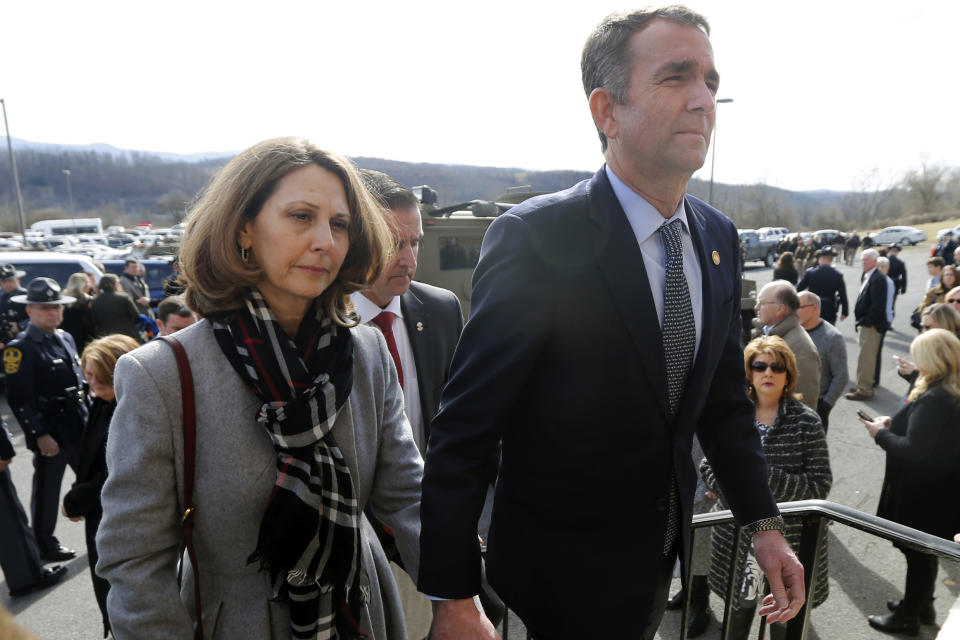Maryland, Virginia, D.C. issue stay-at-home orders
The leaders of Maryland, Virginia and the District of Columbia issued shelter-in-place orders to residents on Monday, escalating their synced response to the coronavirus pandemic as officials warned that the outbreak in the capital region would soon look as dire as New York's.
“We are no longer asking or suggesting that Marylanders stay home. We are directing them to do so,“ Gov. Larry Hogan of Maryland said during a news conference in Annapolis on Monday morning, citing a “critical turning point” in the rapidly spreading outbreak.
Hogan‘s order was followed hours later by a similar directive in Virginia from Gov. Ralph Northam, and a few hours after that D.C. Mayor Muriel Bowser announced that the District would follow suit.
“Our message today is very clear, that is to stay home,” Northam said during a news conference in Richmond, adding that “it is clear more people need to hear this basic message.”
The region is home to hundreds of thousands of federal workers, many of whom are already telecommuting as their agencies try to minimize their exposure to the virus. Hogan on Monday pointed to requests from himself, Northam and Bowser asking that the Washington metro area be designated a priority location for a “federally supported Covid-19 testing site,” arguing that the region was home to “national leaders who are actually fighting this battle for the nation,” including the agencies “on the front lines of the battle against the coronavirus.”
The leaders’ directives come a week to the day after they ordered all non-essential businesses in their states closed. At the time, Hogan defended his decision not to issue a stay-at-home order, saying Maryland’s guidelines at the time were "somewhat more restrictive than other states that are calling it shelter in place."
All three, including Northam as recently as Friday, called debates over the severity of their restrictions a matter of semantics. In a news release announcing the D.C. order, Bowser said on Monday that the new directive “reinforces” her previous “direction to residents to stay at home except to perform essential activities.”
Asked what prompted his change of heart, Northam, a physician, said on Monday that the surge in cases was personal for him, pointing to his experience with “mass casualty episodes.” But the governor expressed outrage that over the weekend, the state’s beaches and recreational areas were “literally packed.”

“I also see people congregating on the beach that are completely ignoring what we’re doing,“ he said, “and I will remind these folks: You are being very very selfish because you are putting all of us, including our health care providers, at risk.”
Up until now, he added, shelter in place “has been a suggestion to Virginians. Today, it’s an order.”
His directive, which closes beaches except for exercise and fishing, extends until June 10.
Hogan told reporters on Monday that Maryland is up to 1,413 confirmed cases of the novel coronavirus and that state has seen infections in individuals as young as one month old. Deaths in the state tripled over the weekend from five to 15, he said.
Hogan pointed to an outbreak of the respiratory illness, which is increasingly dangerous among the elderly and those with underlying health issues, at a Maryland nursing home where 67 residents have tested positive for the virus and 27 staffers are experiencing symptoms.
In Virginia, Northam’s administration said that there are now 1,020 confirmed cases in the state, telling reporters that he expects the commonwealth to see an imminent surge in patients who will require hospitalization because of the virus.
The trio of executive orders also came one day after President Donald Trump said he would extend federal social-distancing recommendations until the end of April, backing off a previous declaration that he hoped to reopen large swaths of the country by mid-April.
In the so-called DMV, which comprises Maryland, Virginia and the District of Columbia, Hogan said cases had quadrupled over the past week, and warned that the region could closely resemble the massive outbreak in the New York tri-state area in as little as two weeks. Hogan and Northam will join more than two dozen other states and numerous other cities with shelter-in-place orders.
Hogan said that his latest directive followed some of the “earliest and most aggressive” social-distancing measures in the country, and the response of all three governments has remained in lockstep as to prevent a patchwork of policies throughout the region.
But both governors on Monday appeared frustrated by the flouting of their earlier restrictions.
“Despite all of those actions and our repeated warnings for more than three weeks and in spite of the rapid escalation of this crisis across the world, the nation and our state, some people are still choosing to ignore those executive orders and directives” Hogan said. “Those individuals are endangering themselves and their fellow citizens. Anyone engaged in this type of reckless behavior is in violation of state law and is putting family, their friends and their fellow Marylanders at risk.”
Northam, meanwhile, stressed that social-distancing restrictions apply to all age groups, a knock at young people who have been viewed as taking the pandemic less seriously.
“Every age group needs to act responsibly and stay home,” he said, noting that nearly half of Virginia’s infections are in people under the age of 50 and conceding that “we are at the beginning of a period of sacrifice.”
He urged residents to keep social distancing, which is meant to blunt the spread of the virus in order to “flatten the curve” of infections and prevent hospitals from getting overwhelmed.
“What we’re seeing now is the result of how people interacted two or three weeks ago,” Northam said of the recent explosion of cases. “What we will see a few weeks from now will be determined by how people behave today and in the following days.”

